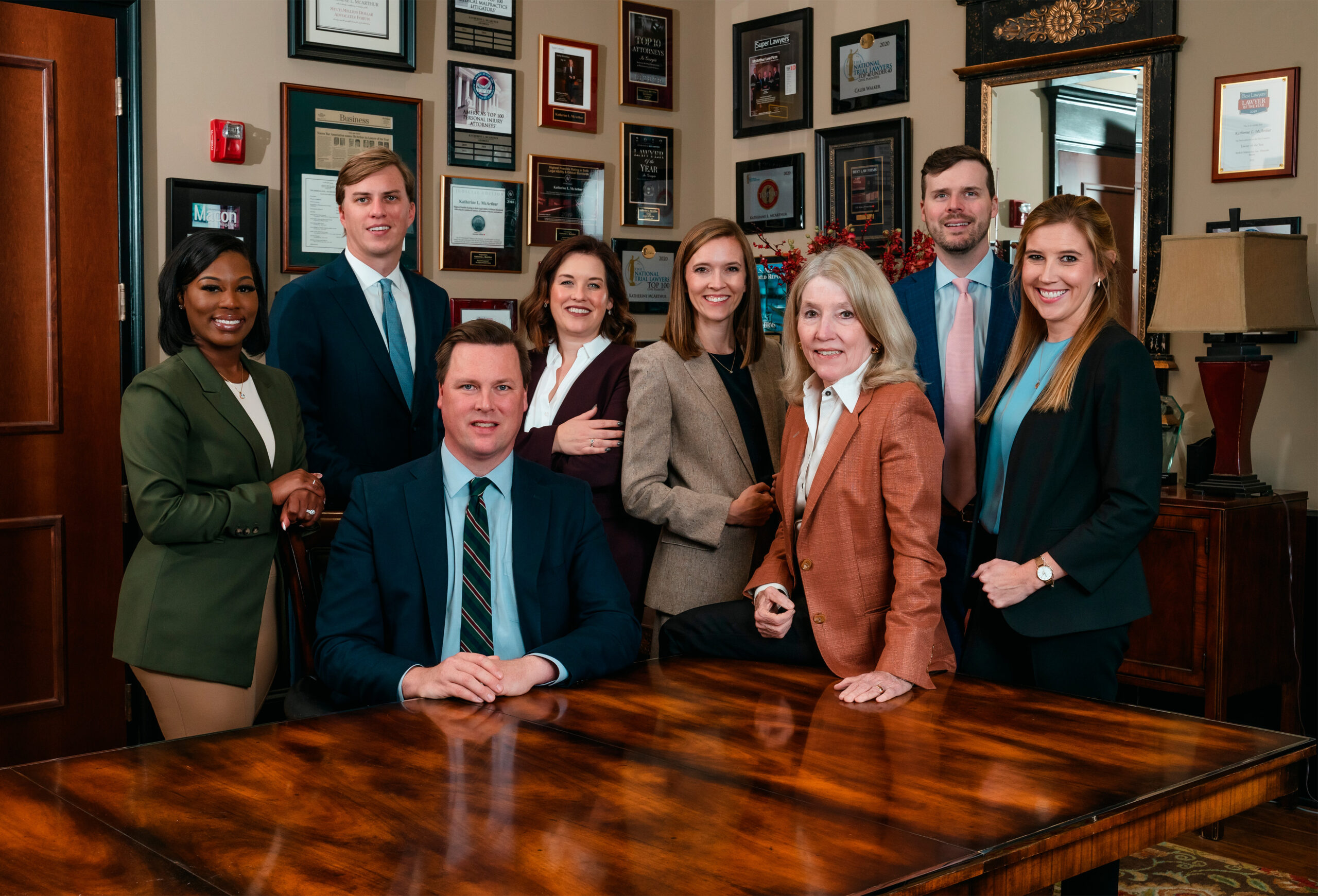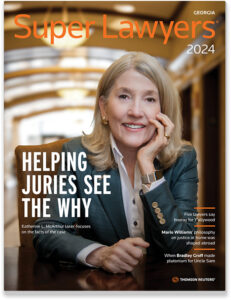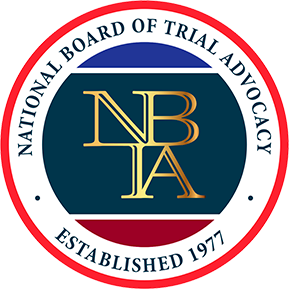When thousands of pounds of steel, machinery, or vehicle weight come down on a person, the damage is immediate and often permanent. A crush accident doesn’t just cause pain — it destroys stability, independence, and the ability to live life as before. Whether the incident happens on a highway, at a construction site, or inside an industrial facility, the physical and emotional cost is overwhelming. Victims are left facing surgeries, rehabilitation, and months of uncertainty while those responsible try to distance themselves from blame.
Georgia Crush Accident Lawyer
At McArthur Law Firm, we don’t treat these cases as routine injury claims. We know what it means to go up against corporations, insurers, and employers who want the problem to disappear. Our attorneys work relentlessly to uncover the truth, prove fault, and hold every negligent party accountable. In the discussion below, we outline what victims and their families need to understand about crush accidents in Georgia — how these tragedies occur, who may be legally responsible, the options available under Georgia law, the forms of compensation that may be pursued, and how a Georgia crush accident lawyer can fight on the victim’s behalf for justice and recovery.
McArthur Law Firm serves the entire state of Georgia, including: Fulton County, Bibb County and Fulton County, as well as Clayton County, Cherokee County, Forsyth County, and surrounding communities. For more information about the McArthur Law Firm or to set up a free consultation to learn what we may be able to do to help you with your crush accident and/or injury case, give us a call at one of our offices in Georgia or fill out our online contact form.
- Atlanta Office: 404-565-1621
- Macon Office: 478-238-6600
- Warner Robins: 478-551-9901
Overview of Crush Accidents in Georgia
- Major Types of Crush Accidents
- Serious Crush Accident Injuries
- Where Crush Accidents Often Happen in Georgia
- Who May Be Liable After a Crush Accident in Georgia
- Role of a Georgia Crush Accident Lawyer
- Frequently Asked Questions About Georgia Crush Accidents
- Resources
Major Types of Crush Accidents
Vehicle Crush Accidents — Individuals can be seriously injured when a car or truck folds in on itself or collapses during a collision. These crashes frequently occur when vehicles roll over, pile up, or become pinned between larger vehicles or barriers. The impact may cause the roof, doors, or frame to collapse, trapping occupants inside. Emergency crews often rely on specialized tools to free victims from the wreckage, and the resulting physical and emotional trauma can be severe.
Worksite and Construction Crush Accidents — In construction zones and industrial worksites, heavy machinery such as forklifts, cranes, and compactors create significant crush hazards. Workers may become pinned between equipment, trapped under materials, or struck by collapsing structures. Even when safety procedures exist, crowded job sites and poor communication can lead to devastating incidents. These accidents often result in life-altering injuries that require months or even years of recovery.
Factory and Warehouse Crush Accidents — Within factories or warehouses, crush injuries can occur when heavy pallets, storage racks, or automated machinery malfunction or collapse. Workers may be caught between moving conveyor belts, robotic arms, or industrial presses. These environments are typically fast-paced and filled with mechanical systems that can fail unexpectedly, making it essential for supervisors to enforce regular safety maintenance and employee training.
Home and Public Place Crush Accidents — Everyday environments can also pose unexpected crush dangers. Elevators, escalators, and automatic doors may malfunction, trapping hands, feet, or even entire bodies. At home, falling objects, unstable shelving, or malfunctioning garage doors can cause serious injuries. When these incidents occur in public spaces such as shopping centers or sports venues, investigations may be necessary to determine whether property owners or equipment manufacturers violated safety standards.
Pedestrian and Cyclist Crush Accidents — Pedestrians and cyclists face unique risks of being crushed between vehicles or pinned against fixed structures. Delivery trucks, buses, and large SUVs have blind spots that make these individuals especially vulnerable. Such accidents often occur in parking lots, intersections, and congested downtown areas where traffic and limited visibility increase the danger.
Commercial Truck Crush Accidents — Large truck collisions can produce some of the most catastrophic crush injuries. When a smaller vehicle slides beneath a trailer (known as an underride accident) or when a truck jackknifes, the consequences can be fatal. These incidents can cause complete vehicle collapse and often demand extensive investigations to establish liability. Although trucking companies must comply with strict safety regulations, maintenance failures or rule violations can quickly lead to tragedy.
Structural Collapse and Crowd Crush Accidents — Buildings, bleachers, and other structures can fail due to excessive stress or poor design, trapping or crushing those below. Similarly, crowd surges at concerts, sporting events, or festivals can exert immense pressure capable of breaking bones or causing suffocation. When such events occur, investigators must examine engineering plans, safety procedures, and crowd management protocols to determine why the structure or event became unsafe.
Serious Crush Accident Injuries
Severe Bone Fractures — The immense pressure of a crush accident can shatter bones in ways far more complex than a standard break. Victims may experience crushed joints, shattered limbs, or compound fractures that necessitate multiple surgeries and extensive physical therapy to restore movement and strength.
Internal Organ Damage — When heavy objects or machinery compress the body, internal organs can become bruised, ruptured, or permanently impaired. The danger is often not immediately visible, as internal bleeding and swelling may take time to appear but can quickly escalate into life-threatening conditions without urgent medical attention.
Compartment Syndrome — One of the most critical complications following a crush injury, compartment syndrome occurs when pressure builds within muscle compartments, restricting blood flow. Without prompt treatment, this can lead to tissue death, permanent nerve damage, or even the need for amputation. Immediate medical intervention is essential to prevent lasting harm.
Amputations and Nerve Damage — In cases where a limb or hand is crushed beyond repair, amputation may be medically necessary. Even when the limb can be preserved, nerve compression or severing can result in chronic pain, numbness, or weakness that impairs a person’s ability to work or perform everyday activities.
Rhabdomyolysis and Tissue Death — Crush injuries frequently destroy muscle tissue, releasing toxins into the bloodstream that can trigger kidney failure. This condition, known as rhabdomyolysis, is a medical emergency requiring aggressive treatment. Long-term effects may include chronic fatigue, reduced mobility, and ongoing organ complications.
Disfigurement and Long-Term Disability — Beyond the initial trauma, crush injuries can permanently change an individual’s appearance or physical capabilities. Scarring, deformity, and the loss of limb function can impact confidence, employment opportunities, and independence. In severe cases, continuous rehabilitation and psychological support are vital for long-term recovery.
Where Crush Accidents Often Happen in Georgia
Atlanta Traffic Hotspots and Construction Zones — In Atlanta, crush accidents are tragically common due to the city’s heavy traffic, constant development, and dense network of highways. Major interstates like I-285, I-75, and I-85 are notorious for multi-vehicle pileups and truck collisions that trap drivers in crushed vehicles. In downtown Atlanta and Midtown, ongoing construction of high-rise buildings, bridges, and commercial projects creates frequent hazards for workers and pedestrians. Cranes, forklifts, and compactors operate in tight spaces, and one mistake can cause a collapse or trapping injury. Near Hartsfield-Jackson International Airport, the combination of delivery trucks, construction equipment, and airport ground vehicles makes crush incidents even more likely. Even experienced workers and cautious drivers face serious risks in these congested areas.
Macon Industrial and Freight Zones — Macon’s strong presence in Georgia’s freight and manufacturing industries makes it another major center for crush accidents. Warehouses and distribution centers along I-75 and I-16 often involve forklifts, pallet jacks, and heavy cargo that can trap or crush workers. Freight terminals and rail yards see frequent loading and unloading activity, where one mechanical error can lead to devastating consequences. The city’s industrial corridors, including areas near Eisenhower Parkway and Emery Highway, are particularly prone to vehicle-versus-equipment accidents. Workers in Macon’s plants and logistics hubs often face long hours around machinery that must be precisely maintained to avoid failure. When safety checks are skipped or production is rushed, serious crush injuries can occur.
Who May Be Liable After a Crush Accident in Georgia
Negligent Drivers and Trucking Companies — On Georgia roadways, another driver or a trucking company is often legally responsible when a crush accident occurs. Under O.C.G.A. § 51-1-2 and § 51-1-6, injured parties may pursue damages when someone breaches their duty of care. Trucking companies can also be held liable under O.C.G.A. § 51-2-2 for the negligent actions of their drivers. If a truck’s brakes fail, a driver falls asleep, or safety inspections are neglected, both the driver and the company may owe compensation for resulting injuries and losses.
Construction Companies and Site Operators — At Georgia construction sites, companies are required to maintain reasonably safe working conditions as established under O.C.G.A. § 51-3-1. When workers are crushed by collapsing equipment, falling materials, or malfunctioning machinery, the contractor or site operator may be held accountable. Although OSHA regulations help define safety standards, a successful claim depends on demonstrating that the company ignored or failed to correct hazardous conditions that led to the accident.
Manufacturers of Defective Equipment — When machinery, vehicles, or tools malfunction and cause crush-related injuries, O.C.G.A. § 51-1-11 allows injured individuals to bring claims against the manufacturer or seller for product defects. Examples include defective lift mechanisms, collapsing vehicle frames, or missing or faulty safety guards. Expert analysis is often required to identify and confirm the defect that directly caused the injury.
Property Owners and Businesses — According to O.C.G.A. § 51-3-1, property owners — including those managing stores, garages, and event venues — must keep their premises safe for visitors. If unstable shelving, collapsing structures, or heavy equipment cause injury, the owner may be held liable for failing to repair or warn about known hazards.
Government Entities — When a crush accident involves a public vehicle, roadway, or structure, the Georgia Tort Claims Act (O.C.G.A. § 50-21-20 et seq.) may allow a victim to seek compensation from a government agency. However, these claims must typically be filed within one year, and the amount of damages is limited by statute. Whether a particular agency can be sued depends on the facts of the case and requires detailed legal evaluation.
Role of a Georgia Crush Accident Lawyer
Investigating What Caused the Crush Accident — After a crush accident, an attorney’s first step is to secure crucial evidence before it disappears. The legal team documents the scene, inspects damaged vehicles or machinery, and works with engineers, safety experts, and medical professionals to determine precisely how the crushing occurred. In industrial or worksite cases, they review maintenance logs, safety reports, and inspection records to uncover unsafe conditions or negligent oversight.
Handling Insurance and Overlapping Claims — Crush accidents often involve multiple insurance policies, including auto, employer, property, and product liability coverage. The attorney coordinates these claims and ensures that insurance companies do not minimize the severity of the injuries or shift blame. Because crush injuries can cause permanent disabilities, an experienced Georgia crush accident lawyer evaluates the client’s full future medical and financial losses before agreeing to any settlement.
Taking Legal Action When Needed — When insurers refuse to offer fair compensation, the attorney files a lawsuit against all responsible parties — such as trucking companies, contractors, manufacturers, or property owners. These cases often rely on expert reports that detail the mechanical forces involved and the extent of the client’s injuries. The attorney manages every aspect of the legal process, including filings, deadlines, and court appearances, allowing the client to focus on recovery.
Fighting for Compensation — Crush injuries result in substantial physical, emotional, and financial burdens. The attorney pursues full compensation for medical expenses, lost wages, rehabilitation, prosthetics, and home modifications. They also seek damages for pain, disfigurement, and emotional suffering — and, in cases involving reckless conduct, pursue punitive damages to hold wrongdoers accountable.
Frequently Asked Questions About Georgia Crush Accidents
What is a crush accident and what makes it so dangerous?
A crush accident occurs when extreme pressure traps part of a person’s body, often between vehicles, machinery, or heavy objects. The resulting force can cause severe damage to bones, muscles, and internal organs. Without immediate medical intervention, these injuries can rapidly become life-threatening.
What should someone do first after a Georgia crush accident?
The first step is to call 911 and remain as still as possible if trapped. Once it is safe to move, it is important to take photographs, gather witness information, and contact a Georgia crush accident lawyer right away to preserve evidence and protect legal rights.
Who is usually at fault for a crush accident in Georgia?
Fault depends on the location and circumstances of the accident. Negligent drivers, employers, property owners, or manufacturers may all be responsible. A Georgia crush accident attorney investigates every detail to identify who acted negligently and caused the injury.
How much compensation can be recovered from a Georgia crush accident claim?
The value of a claim depends on the severity of injuries, medical expenses, lost income, and long-term effects. A Georgia crush accident lawyer seeks full compensation for medical costs, pain, disfigurement, and permanent disability resulting from the incident.
How long does someone have to file a crush accident claim in Georgia?
Under Georgia law, an injured person typically has two years from the date of the crush accident to file a personal injury lawsuit. Delaying legal action beyond this deadline can result in losing the right to pursue compensation.
Will insurance cover all damages from a crush accident?
Insurance companies often attempt to settle quickly for less than the true value of the injuries. Because crush injuries can generate extensive medical and financial costs, an attorney reviews all insurance policies, negotiates assertively, and ensures that no unfair settlement is accepted.
What happens if a crush accident occurs while someone is working?
Work-related crush accidents may qualify for workers’ compensation benefits. However, if an outside company or defective equipment contributed to the accident, additional claims may be possible. A Georgia crush accident lawyer can determine eligibility for compensation beyond standard workplace coverage.
Can a person still recover damages if partly at fault for the crush accident?
Yes. Under Georgia’s comparative negligence rule, an injured person can recover damages if they are less than 50% at fault. The total compensation is reduced by the percentage of fault, but substantial recovery is still possible with skilled legal representation.
Why is it important to hire a Georgia crush accident lawyer right away?
Crush accident cases require immediate investigation, expert analysis, and strong legal advocacy. A knowledgeable Georgia lawyer secures key evidence, handles communication with insurers, and fights for maximum compensation to cover long-term medical and financial needs.
Resources
MedlinePlus – Crush Injury — This MedlinePlus page explains what a crush injury is and provides first aid steps for treating it. It lists common complications such as bleeding, fractures, nerve injury, and infection. The source also describes when to seek emergency care and includes references to medical textbooks.
National Library of Medicine – Crush Injuries and the Crush Syndrome — This National Library of Medicine article provides an in-depth medical overview of crush injuries and crush syndrome. It covers the causes, pathophysiology, symptoms, and treatment methods such as fluid replacement, dialysis, and hyperbaric oxygen therapy.
National Library of Medicine – Multi-Source Surveillance for Work-Related Crushing Injuries — This National Library of Medicine study reviews a multi-source surveillance system for tracking work-related crushing injuries in Michigan. It explains how data from hospitals, workers’ compensation, and other sources were used to identify cases and support workplace safety inspections.
Hire a Personal Injury Lawyer for Crush Accidents in Atlanta, Georgia
McArthur Law Firm serves the cities of Atlanta in Fulton County, Macon in Bibb County, Kathleen in Houston County, Peachtree Corners and Lawrenceville in Gwinnett County, Marietta and Smyrna in Cobb County, Stonecrest, Brookhaven and Dunwoody in Dekalb County, Albany in Dougherty County, Columbus in Muscogee County and throughout the surrounding areas of the state of Georgia.
Contact one of our offices at the following numbers or fill out an online contact form to start building your case.
- Atlanta Office: 404-565-1621
- Macon Office: 478-238-6600
- Warner Robins: 478-551-9901







